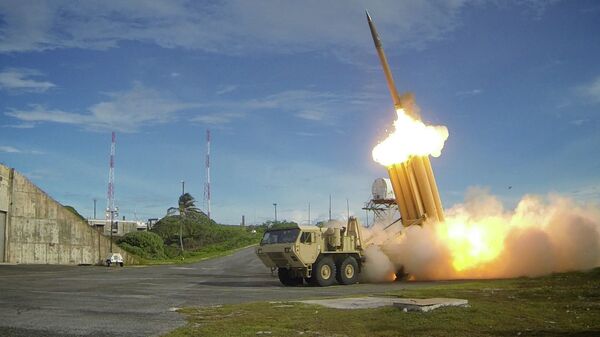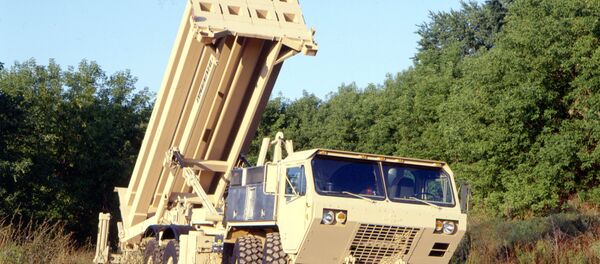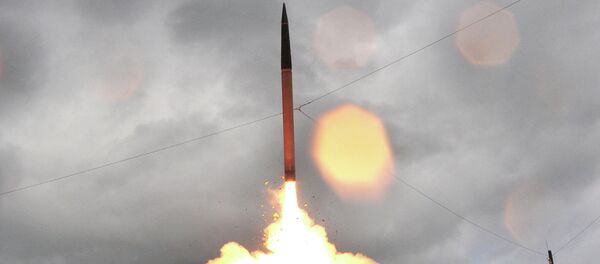China has expressed extreme displeasure and protest in connection with this decision, urging to halt THAAD deployment in South Korea, according to the statement by the Chinese Foreign Ministry.
The United States and Korea have clearly ignored the position of other countries including China’s when making the decision to place the system.
In Beijing this move is seen as a serious violation of strategic safety of China and the region. According to the statement this decision will disrupt the strategic balance in the region.
The Deputy Director of the Institute of USA and Canada, Pavel Zolotarev, called this move a legitimate concern of China and speculated about its possible response.
“First of all, for China radar facilities of this complex are represented as a threat because this complex will keep track of China and the Yellow Sea regions.”
The US is also concerned by the potential of China’s medium-range missiles, no matter whether they are equipped with nuclear or non-nuclear weapons. After all, these tools are the greatest threat to the US aircraft carrier battle groups which are the main threat to the United States.
“If, indeed, THAAD complex will be placed in South Korea, the United States will be able to have detailed information about China, because the radars can track objects ranging in size from 10 to 20 centimeters,” Zolotarev said.
“Therefore, China's concern is justified, but I think that because of the nature of Chinese diplomacy, first of all, these steps will have a political and diplomatic method.”
Meanwhile, leading expert at Moscow’s Institute of World Economy and International Relations, Vladimir Dvorkin, did not exclude a military response from China.
“China can, of course, speed up the development of its maritime ballistic missile components. That is, to develop more effective missile submarines that can be equipped with plenty of strategic missiles with multiple warheads. I do not see any special measures in addition to energetic warnings and statements,” Dvorkin said.
Meanwhile, there is a new clash of geopolitical interests, as China in one way or another has to respond directly to the creation of the US regional missile defense system as part of its global system.
“That is a clash of interests and unfortunately, cannot be the best way to influence the joint opposition to North Korea's desire to acquire nuclear weapons,” the expert further said.
In the statement of the Chinese Foreign Ministry it is clearly explained that this move by the United States and South Korea will not help achieve the goal of denuclearization of the Korean Peninsula, as well as it will not be conducive to peace and stability on the Korean peninsula.
It is completely at odds with efforts to resolve the issue by all parties through dialogue and consultation.
“Shooting mosquitoes with cannon” is what this US-South Korean decision has been labeled as by the Head of the Center for studying problems of Northeast Asia at the Academy of Social Sciences at Heilongjiang province.
“Although the placing of THAAD is being justified by the situation on the Korean peninsula, in fact it is a definite threat to Northeast Asia, China and Russia. This threat appears not only as a military quest, but can also create an imbalance for different countries in response to the situation on the Korean peninsula,” the head said.
According to the specialist, the placement of the US THAAD complex in South Korea could result in an increase in US influence in the region, which will inevitably lead to concerns about China and Russia, causing the two countries to take retaliatory measures in response.
All of this could further lead to an arms race or even cause conflicts of the various parties in response to the situation in the region.
The THAAD system is designed to intercept short, medium, and intermediate ballistic missiles at the terminal incoming stage. The system's potential deployment on the Korean Peninsula has caused concern in Russia, China and North Korea.




